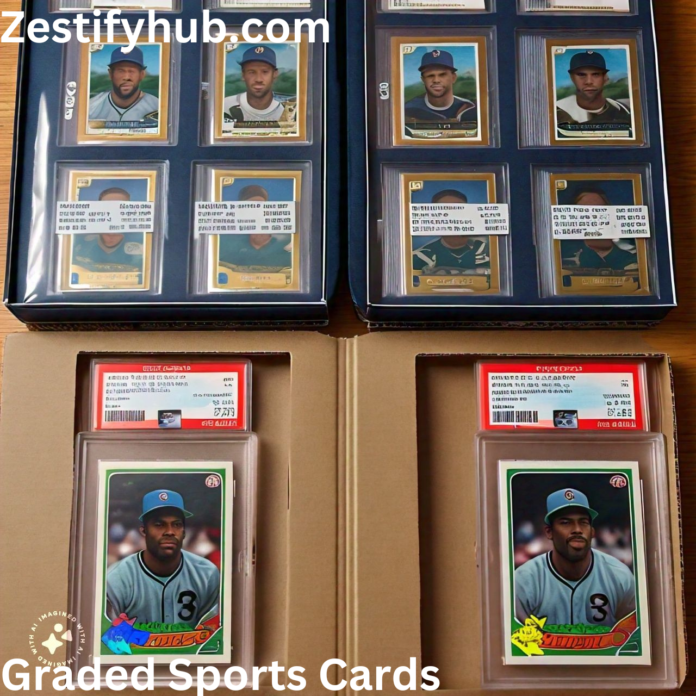Introduction:
In the realm of sports memorabilia, graded sports cards stand out as prized possessions, cherished by collectors and enthusiasts alike. These cards, meticulously assessed for their condition and authenticity, represent a fusion of sports history, artistic design, and investment potential. As interest in collecting continues to surge, understanding the nuances of graded sports cards has become essential for both seasoned collectors and newcomers to the hobby. This article delves into the captivating world of graded sports cards, exploring their significance, grading process, market dynamics, and investment potential.
The Significance of Graded Sports Cards:
At their core, graded sports cards encapsulate a moment frozen in time, immortalizing the achievements of legendary athletes and iconic moments in sports history. From the rookie cards of Hall of Fame superstars to limited-edition inserts featuring game-worn memorabilia, each card tells a unique story and evokes a sense of nostalgia among collectors.
What sets graded sports cards apart is their certification by reputable grading companies, such as PSA (Professional Sports Authenticator) and Beckett Grading Services (BGS). These companies employ rigorous standards to evaluate factors such as centering, corners, edges, surface condition, and overall presentation. By assigning a numerical grade and encapsulating the card in a protective holder, grading companies provide collectors with assurance regarding the card’s authenticity and condition.
The Grading Process Demystified:
The journey of a sports card from raw to graded begins with careful examination and scrutiny. Grading companies employ experienced professionals who meticulously inspect each card under specialized lighting and magnification. Any flaws or imperfections, no matter how minor, can impact the final grade and consequently, the card’s value.
Centering, arguably the most critical aspect of grading, refers to the alignment of the card’s borders in relation to its design elements. Cards with off-centering or skewed borders may receive lower grades, as they detract from the card’s visual appeal and symmetry.
Corners and edges are scrutinized for signs of wear, including dings, creases, or chipping. Cards with sharp, well-defined corners and crisp edges command higher grades, indicating minimal handling and preservation.
Surface condition encompasses factors such as print quality, glossiness, and any signs of scratches, stains, or print defects. Cards with vibrant colors, clean surfaces, and minimal blemishes are more likely to receive favorable grades.
When the assessment is finished, the card is relegated a mathematical grade on a size of 1 to 10, with 10 being the most noteworthy conceivable grade (alluded to as “Pearl Mint” or “Pristine”). The encapsulation process involves sealing the card in a tamper-evident holder, complete with a label detailing its grade, player name, and relevant information.
Market Dynamics and Rarity:
In the world of graded sports cards, rarity reigns supreme. While iconic players and popular sets often command attention, it’s the scarcity of certain cards that drives demand and influences prices. Rookie cards, especially those from key players in their respective sports, are perennial favorites among collectors due to their significance and potential for appreciation over time.
Limited-edition inserts, autographed cards, and cards featuring game-used memorabilia are highly sought after for their exclusivity and appeal to avid collectors. Serial numbering, denoting the card’s unique production sequence, adds an extra layer of desirability and collectibility.
Market trends and player performance can also impact the value of graded sports cards. Breakout seasons, championship victories, or record-breaking achievements can lead to spikes in demand for cards featuring the respective players. Conversely, controversies, injuries, or declines in performance may dampen interest in certain cards.
Investment Potential and Strategies:
For many collectors, graded sports cards represent not only a passion but also a potential investment opportunity. The allure of owning a piece of sports history, coupled with the potential for appreciation in value, makes collecting graded cards an enticing proposition.
When considering investment potential, collectors often look for cards with strong fundamentals, including player relevance, scarcity, and historical significance. Rookie cards of future Hall of Famers, cards from iconic sets, and low-population cards (those with fewer examples in circulation) are typically viewed as desirable long-term investments.
Diversification is key to building a robust sports card portfolio. By spreading investments across different sports, players, and eras, collectors can mitigate risks and capitalize on opportunities in various segments of the market.
Staying informed about market trends, industry news, and player developments is essential for making informed investment decisions. Engaging with online communities, attending card shows, and following reputable sources of information can provide valuable insights and networking opportunities.
Finally, patience and discipline are vital virtues for collectors-turned-investors. While some cards may experience rapid appreciation in value, others may require time to realize their full potential. By adopting a long-term perspective and resisting the temptation to speculate impulsively, collectors can build a portfolio that stands the test of time.
Conclusion:
Graded sports cards represent a convergence of sports history, craftsmanship, and investment potential, captivating collectors with their allure and intrinsic value. From the thrill of uncovering a rare gem to the satisfaction of building a curated collection, the journey of collecting graded cards is as rewarding as it is enriching.
As interest in sports memorabilia continues to soar and new generations of collectors emerge, the world of graded sports cards promises endless opportunities for discovery, appreciation, and camaraderie. Whether pursued as a hobby, an investment, or a combination of both, collecting graded sports cards offers enthusiasts a gateway to the timeless allure of sports and the enduring magic of collecting.

